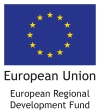iWater developed a city-specific integrated stormwater management strategy
Integrated Stormwater Management (iWater) project improves the urban planning in the cities of the Baltic Sea region through development of comprehensive stormwater management system which is integrated into the urban development processes of the city at all levels.
In result, each of 7 partner cities (Helsinki, Turku, Tartu, Jelgava, Riga, Söderhamn and Gävle) developed its own tailor-made solution – a city-specific stormwater management strategy. Each city also established an institutional model for stormwater management.
Project was implemented applying science-practice collaboration model developed by the Aalto University. The university helped to ensure the close cooperation between academic field and the practicioners when the project outputs were being prepared, when actions/strategies were planned in the pilot sites.
Since integrated storm management is relatively new subject in some BSR cities and knowledge, experience level are quite different, capacity building activities played and important role in the project. International, national capacity building workshops other events were organised where knowledge was presented, exchanged, project outputs were discussed and shared. 3 iWater summer schools (61 students from 17 countries/16 universities) were organised. In result 19 creative, innovative and multi-functional stormwater management solutions for 7 pilot sites of 7 iWater partner cities.
The project developed the following practical tools and guidelines which can be useful for the municipalities, urban planners, architects etc. outside iWater partnership:
Integrated Storm Water Management System Guidelines
The main purpose of the guidelines is to help other cities establish a comprehensive storm-water management approach and integrate it into the urban development processes at all levels. The guidelines provide very concrete tips, tools how to plan an implement the integrated storm water management in the municipality from scratch trough cycle (planning, implementation and monitoring).
Green Area Factor excel tool
Green Factor is a practical and user-friendly excel-based tool for urban planning. It ensures sufficient green infrastructure when building new lots in a dense urban environment. The Green Factor is calculated as the ratio of the scored green area to lot area. The target level for the lot can be achieved flexibly by the garden designer by selecting some of the 39 green elements, such as planted and maintained vegetation or various run-off water solutions, when designing the lot.
This tool was developed for the first time in 1997 in Berlin - “Biotope Area Factor1”. Later on similar tools were created/adapted based on Berlin also in other cities, for example Stockholm, Malm, Seattle and Toronto. Similar tool was developed also in Helsinki as a part of the EU-funded “Climate-proof city – tools for planning” (ILKKA) project in 2014. Based on the experiences with the tool’s usage and due to the increasing importance of stormwater management, an updated version of this tool was to be developed within the iWater project.
The Tool has been adopted and piloted in partner cities during the project: Riga, Jelgava, Tartu (Jaamamõisa area), Gävle, Söderhamn and Turku, and finally incorporated in the land-use planning process
Integrated Stormwater Management Toolbox
This toolbox introduces the most commonly used approaches and concrete tools for urban stormwater management. It gathers useful information for those interested in, or working with, the design, planning or management of urban water, in particular, landscape architects, architects, as well as urban planners and designers. The information is in an easily adaptable form, including further reading for those who wish to dive deeper. Furthermore, the toolbox focuses on approaches that are applicable or developed for northern climate conditions.
- The iWater project designed stormwater planning tools and approaches and developed Integrated Stormwater Management concept that supports sustainable urban planning and create higher quality and more resilient urban environments in the Baltic Sea region.


